By Mike Smith
A couple weeks ago, my high school team played in the regional tournament for the first time in 4 years. In the first round, we played a team that had beaten us 7-1 earlier in the season. Stocked full of club players from a school of over 1000, my 14 players from our school of 140 needed to close the gap. We weren’t going to get that much bigger, faster, stronger and better on the ball in the span of two weeks and we played our best soccer from a 4-3-3. ( We were the first team in school history to score goals in every game of the season ). Long story short, a poor clearance in the last seconds of double OT saw our season end 2-3 in a game we played well enough to win. For those of you facing a similar situation, dropping into a funnel before applying pressure to the ball is what made the difference.
The diagram below shows our basic attacking formula; get the ball wide, serve it in to near and far post runs. If we could do this from a counter, even better. However, one can easily see the vulnerabilities here when playing against a skilled, organized team, especially if we immediately began chasing the ball around once it was lost.
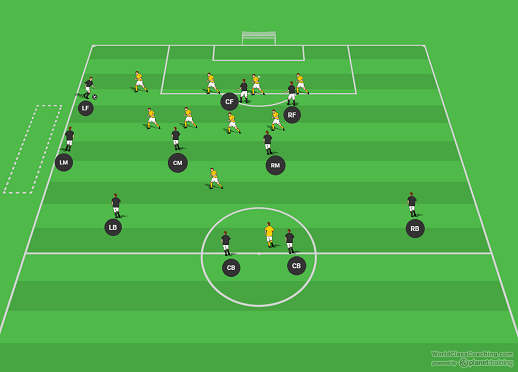
The next diagram shows the answer. We immediately gave them their end, and not only did we clog the middle, we created a funnel to isolate them on one side of the field and direct their play into an area which gave us an advantage.
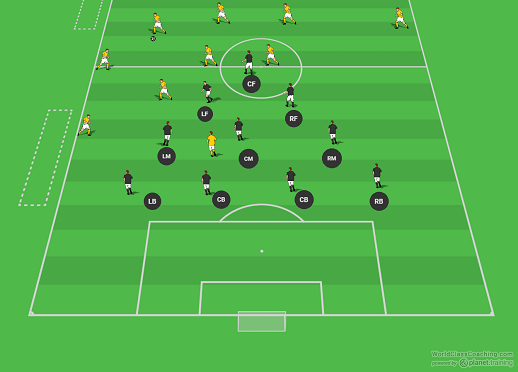
The keys were the early drop into our half, the central forward denying the switch across the back, leaving their wing isolated where only a long searching ball could reach them, and not locking down on the pressure until they came in to us, instead of us out to them.
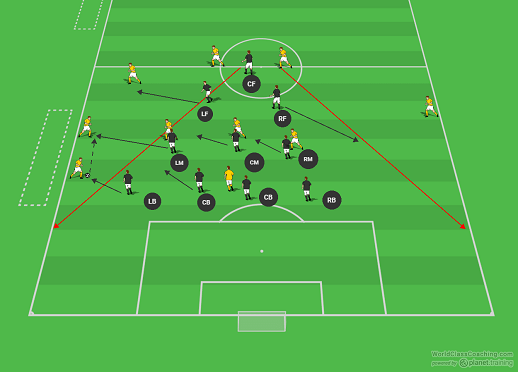
We simply got in shape, moved with the ball and at the right moments, stole passes and poor touches. The center backs were critical in making this work but as the diagram below shows, once the ball was turned over, we had numerous options to get up into the attack, find our open central mid and force them to drop quickly and give us the midfield.
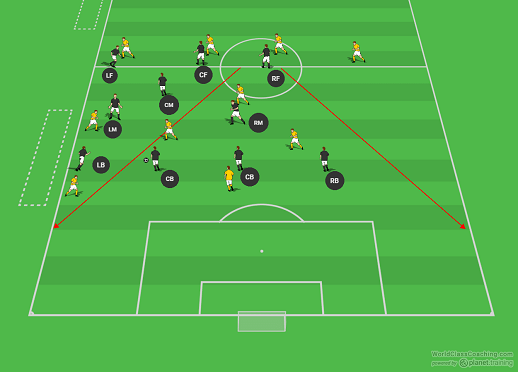
The concept of the funnel can be applied in many formations, but is ideally suited to the 4-3-3. Here are a couple drills which will help your team put this into play.
Lesson 1
Hold the Line / Move with the Ball
Set Up
After a good warm up, set up an angled line of cones as shown to represent the funnel. This can actually be set up on both sides of the field and can be run with groups of 6-10 players at each station. A line of defending players starts in the center ( as shown ) each with a ball and a line of attacking players starts on the half line. The defender sends the ball up to the attacking player, who attempts to dribble inside the funnel PAST the defending player. The key here is for the defender to protect the edge of the funnel and keep the attacker outside until the attacker is pinched in on the line. In this exercise the attacker cannot cut back or behind the defending player. When the attacking player is either past the defender or pinched in on the line, the players switch lines and repeat.
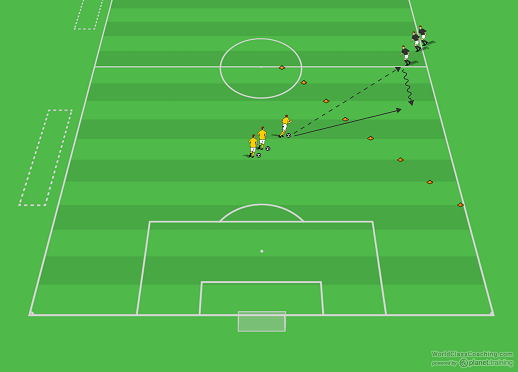
Coaching Points
Good side on position, shuffling back with the ball and not stabbing after the ball are the critical components here. I use the tried and true “ if they can’t shoot, they can’t score” mantra. The defenders job is to simply keep the attacker outside of the funnel and as tight to the line as possible.
Lesson 2
4 Second Delay
Set Up
7 defenders plus the keeper focus on the bottom two tiers of the funnel shape while defending against 4 attackers. Play starts as shown on the first diagram with the 4 attackers on the half line. The only attacking condition is the first pass must be made square and wide down the half line before the attackers advance. During this time, the defenders set the funnel by dropping back to a count of 4. Once the 4 count is made, the outside defender can step out to pressure the attacker with the ball. IF the attacker passes back, the defender drops in and the mid fielder can assume pressure. The idea here is for the group of 7 defending players to move as a unit and move WITH the ball. I initially like to have the defending team simply clear out – out of bound or across the half line – any balls they come up with and then progress to possessing the ball for a certain number of passes. Adding two more defenders and two more attackers as the final progression makes this a lively half field activity.
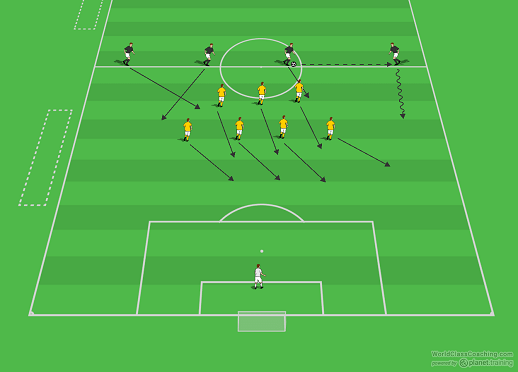
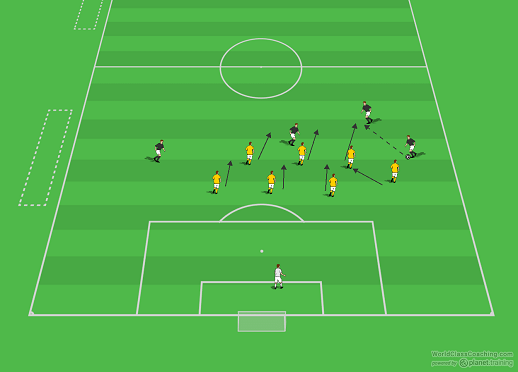
Coaching Points
Shape is important here. Denying penetration is the goal. IF there is good pressure on the ball, the open attacker on the far side will have a hard time receiving it cleanly before the outside back or keeper scoops it up. The defenders should mark tight in the middle and let the shape and funnel concept do the work.
By Mike Smith
Currently the Head Coach for University Heights Academy Boys Soccer in Hopkinsville, KY , Mike is in his 14th year as a high school head coach with 23 years coaching experience overall and 34 year as a student and fan of the game. He holds a USSF D License.


